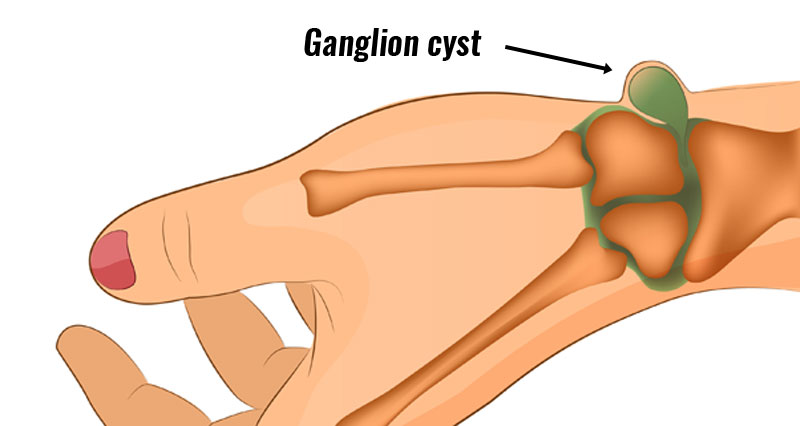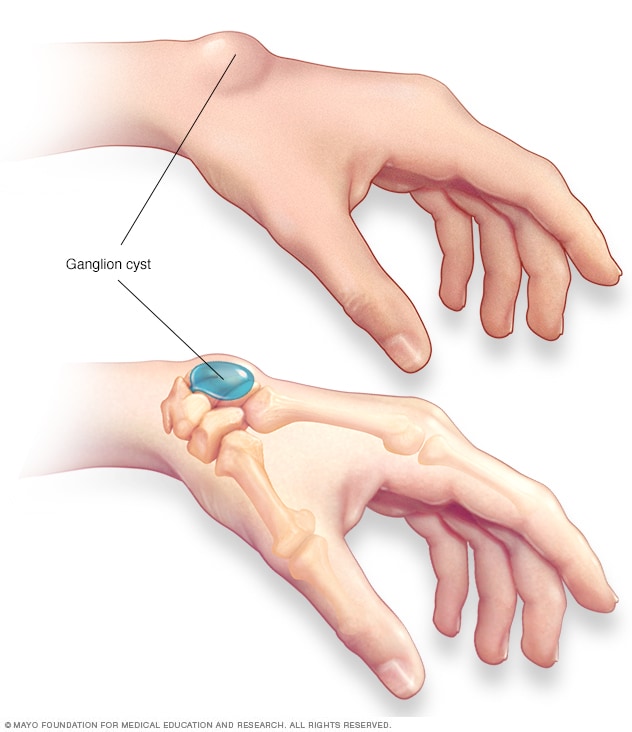Ganglion Cyst Treatments

There are several types of Ganglion Cyst treatments. You can get a splint or wrist brace to reduce the size of the ganglion. You can also do exercises to improve your range of motion and reduce the pain. Another treatment option is called aspiration, which drains fluid from the ganglion cyst. This surgery requires numbing the area around the limb so that a doctor can puncture the area. After the procedure, the patient will wear a hard wrap over the area to protect the skin from bumps and bacteria.
There are two types of surgery available for ganglion cysts. First, aspiration is a procedure that drains the fluid from the cyst. This is the traditional method, which involves inserting a needle into the ganglion cyst to remove the fluid. However, this treatment is expensive and prone to recurrence. Alternatively, you can try other treatments such as surgery or anti-inflammatory drugs.
Treatment options for ganglion cysts vary. They can include immobilization to relieve pressure on nerves, injections of steroids, or surgery. In most cases, the ganglion cyst is treated with medication and surgery. There are several types of surgery. For more serious cases, you can try the alternative treatments mentioned above. If nothing else, you can also try natural ways to treat your ganglion cysts. Just remember to visit your doctor if you notice any changes in your symptoms.
Surgery is the most common treatment for ganglion cysts on the feet. This treatment is effective for many cases, but it does carry risks. You should be prepared to have a scar. The area may feel sore and numb for a few days after the surgery, but this will disappear quickly. In the end, there are no permanent cures for ganglion cysts, so it is always best to seek professional help if you notice a lump on your foot.
Depending on the location of your ganglion cyst, there are several treatments for the condition. Surgical procedures can remove the ganglion cyst. The operative procedure usually involves anesthesia. In the worst case scenario, surgery is necessary. If the ganglion cyst is small and obstructing nerves, surgery can be used to treat it. Despite the risks, surgical treatment is not always necessary. For smaller ganglion cysts, you can wear a splint to relieve the pain and prevent it from spreading.

In some cases, ganglion cysts will resolve on their own. If your ganglion cyst is not responding to nonsurgical treatments, your doctor may recommend surgery. This is an inpatient procedure. A surgeon will have a limited view of your body and can re-evaluate your symptoms. After the surgery, you will be given anesthesia and may need to stay overnight. You will be able to resume normal activities after a few days.
If you do not experience any symptoms, you can simply watch for your ganglion cyst to dissolve on its own. If it is painful, you can opt for surgical treatment. Although the ganglion cyst will likely go away on its own, it may come back with no cure. This is why it is important to consult your doctor immediately if you suspect that you have a ganglion cyst. If you have a ganglion cyst, consult with your doctor to determine the best treatment.
The first step in treatment is to determine the cause of the ganglion cyst. The doctor will use steroid injections to remove the tumor. You may also be prescribed anti-inflammatory pain medications. If you have a large cyst, you may consider surgery. You can find more information about possible cyst treatment options at https://fitzpatrickperio.com/. The surgeon will remove the cyst and numbness in the area, which can lead to nerve damage. Ganglion cysts may recur, but the doctor will do their best to relieve your symptoms.
Surgery is one of the treatment options for ganglion cysts. While the initial physical examination is relatively simple, it may take time to clear up. Outpatient surgery will remove the ganglion cyst. This procedure will remove part of the joint capsule and tendon sheath. There will be some soreness after the operation, but it should not be severe enough to limit your activity. After the procedure, you should be able to resume your normal activities.